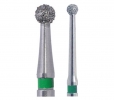The objective of this systematic review was to evaluate the effect of different types of orthognathic surgery on the dimensions of the upper airways assessed using three-dimensional images
An electronic search was performed in Cochrane Library, Medline, Scopus, VHL, Web of Science, and the System for Information on Grey Literature in Europe, ending January 2015. Inclusion criteria encompassed clinical studies in humans, patient age >15 years, patients submitted to maxillary or mandibular advancement or setback surgery, isolated or in combination, and presentation of airway measures, specifically volume and/or minimum cross-sectional area (CSA), obtained from computed tomography or magnetic resonance imaging
Additional searches were conducted on the references of included articles and in the NLM catalogue. An assessment of the risk of bias was performed
A total of 1180 studies were retrieved, of which 28 met the eligibility criteria; one was later excluded as it presented a high risk of bias
A meta-analysis was performed. There is moderate evidence to conclude that the upper airway minimum CSA increases significantly (124.13 mm2) after maxillomandibular advancement (MMA); the total volume increases significantly after MMA (7416.10 mm3) and decreases significantly after maxillary advancement + mandibular setback (−1552.90 mm3) and isolated mandibular setback −1894.65 mm3
Publication date: November 23, 2015





